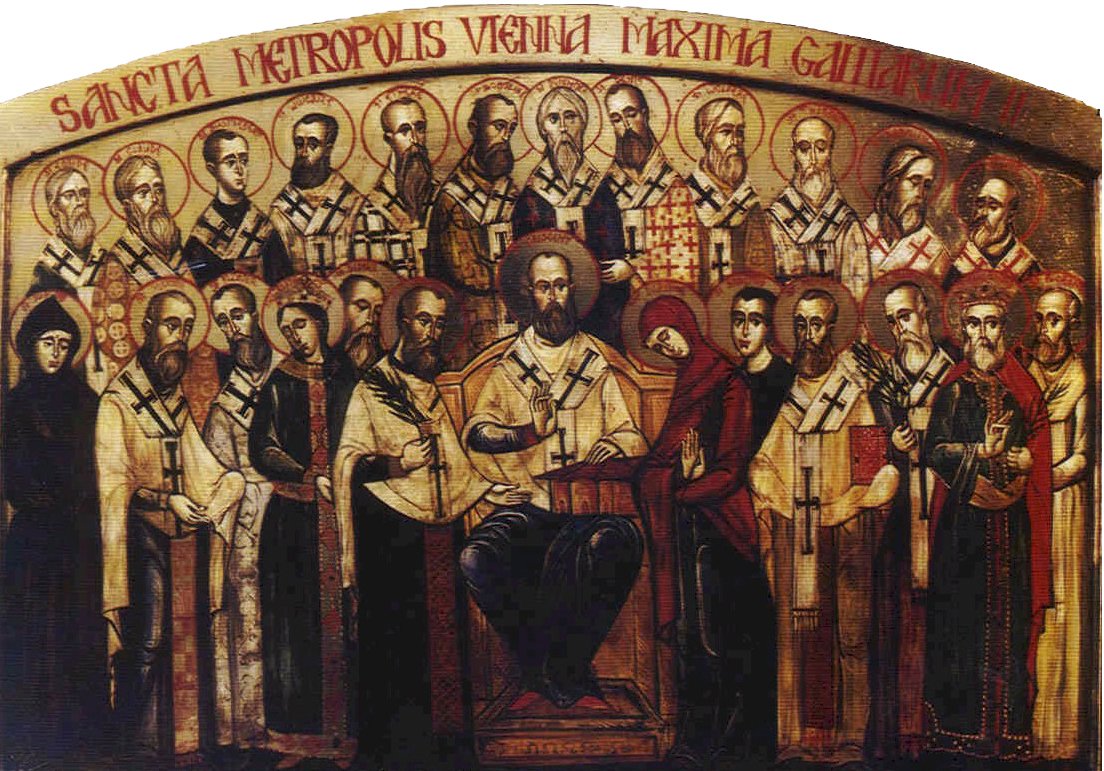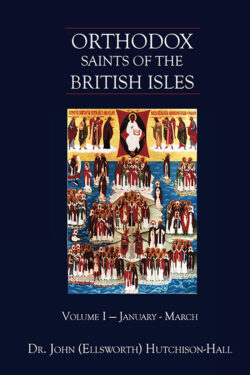
Orthodox Saints of the Pre-Schism
See of Rome
3rd March (NS) — 19th February (OS) 2024
BARBATUS (BARBAS), a native of Benevento, ordained to the priesthood at an early age. St. Barbatus quickly gained a reputation as passionate preacher whose zeal soon earned the enmity of his flock. Forced to resign his parish, St. Barbatus returned to Benevento, there he encountered a pagan resurgence combined with a defiant citizenry when exposed to the Gospel. Soon, completely unrelated to the issues in the city, Benevento found itself under siege by the forces of Emperor Constans II (r. 641–668). This crisis made the population renounce their paganism and embrace Christianity. St. Barbatus assured his flock the siege would end, and it did. After the siege, St. Barbatus was chosen to succeed the Bishop of Benevento, who had perished in the siege. As bishop amongst other activities, St. Barbatus attended the Sixth Œcumenical Council (680–681), at which the Monophysite heresy was condemned. St. Barbatus reposed in 682.
BEATUS, a monk at the Monastery of Santo Toribio in Liebana, near present-day Santander Spain. St. Beatus and was famous for his writing and preaching which unflinchingly condemned the heresy of Adoptionism. Following the abandonment of this heresy, St. Beatus retired to the monastery of Our Lady of Valcavado, in the province of Palencia. There he wrote his celebrated Commentary on the Apocalypse. St. Beatus reposed in 789.
GABINUS, a member of the imperial roman nobility, and apparently related to Emperor Diocletian. St. Gabinus was a priest, the brother of Pope Gaius and father of the martyr St. Susanna (11th August). He was martyred by starvation, circa 295 during the Diocletianic Persecution
GEORGE of LODÈVE, a monk at the Abbey of Saint-Foy-de-Conques in present-day Occitanie, France. Following the destruction of the abbey in 862 by Vikings, St. George relocated to the nearby Abbey of Vabres. Towards the end of his life, St. George was consecrated Bishop of Lodève, Languedoc. St. George reposed circa 884.
MANSUETUS, consecrated forty-first Bishop of Milan circa 672. He is remembered for revitalising his See and for authoring a controversial treatise against Monothelitism. St. Mansuetus reposed circa 690.
ODRAN, whilst he is traditionally believed to have been St. Patrick’s (17th March) charioteer and the first Irish martyr, circa 452, there is no reliable information on this saint extant.
PUBLIUS, JULIAN, MARCELLUS, and COMPANIONS, (Date Unknown), martyrs in North Africa of who there is no further information extant.
QUODVULTDEUS, Bishop of Carthage in North Africa, exiled, along with many of his clerics, to Naples after the Arian Gaiseric, King of the Vandals (r. 428 - 477), conquered Carthage in 439. After arriving in Naples, St. Quodvultdeus and companions set about ministering to the population. He reposed in Naples in 450 and was quickly acclaimed a saint by the population that had witnessed his patience in the face of adversity.
VALERIUS, the second Bishop of Antibes, he reposed circa 450.
Get your copy of Orthodox Saints of the British Isles today.
Available at Amazon or your favourite e-bookstore.
ANSELM, a nobleman and brother-in-law of Aistulf, King of Lombards (r. 749–756). St. Anselm was a career soldier before he left the world and received monastic tonsure. He was the founder of abbeys in Fanano and Nonantola, near Modena in the Po Valley. Both monasteries had hospitals and hostels attached to them. St. Anselm served as Abbot of Nonantola, which grew to around one thousand monks. He reposed in 803.
ARTHELAIS, one of the patron-saints (along with SS. Barbatus 19th February, and Bartholomew the Apostle 11th June) of Benevento in Italy. St. Arthelais was the daughter of an imperial proconsul named Lucius and his wife Aithuesa and is said to have been pursued by Emperor Justinian I (r. 527–565). However, she had taken vows of chastity and fled to Benevento to escape the Emperor’s attentions. St. Arthelais reposed of a fever in 560.
CALUPAN, an anchorite who lived in a cave near Méallet in Auvergne. He reposed in 575.
CAMILLA, after being converted to Christianity by St. Germanus of Auxerre (31st July), St. Camilla became one of his disciples, finishing her life as an anchoress, reposing circa 437.
CELE-CHRIST, St. Cele-Christ (Worshipper of Christ) led an hermetic life for many years, before being forced to accept a bishopric in Leinster. According to The Annals of Ulster, he reposed 728. There is no further information on his life extant.
CUNEGUND, the wife of Emperor Henry II (r. 973–1024) and foundress of Kaufungen Abbey, near present-day Kassel Germany. following repose of Henry, St. Cunegund received monastic tonsure at Kaufungen where she spent the remaining fifteen years of her life, reposing in 1039.
EMETERIUS (HEMITERIUS) and CHELEDONIUS, (Fourth Century), two soldiers in the Imperial Roman army who were martyred in Calahorra in Old Castile, present-day Spain.
FELIX, LUCIOLUS, FORTUNATUS, MARCIA, and COMPANIONS, (Date Unknown), members of a group of forty martyrs in North Africa. The names of the rest of the group are no longer known.
FOILA (FAILE, FOILENNA, FALLENA), (Sixth Century), believed to have been the sister of St. Colgan (20th February), together they are the patrons of the parishes of Kil-Faile (Kileely) and Kil-Colgan, in Co. Galway. Kil-faile has been a noted place of pilgrimage. At one point, there was a written record of her life called The Acts of St. Foila, however, it is no longer extant.
LAMALISSE, a Scottish hermit for whom Lamlash on the Isle of Arran is named. No further information on St. Lamalisse is extant.
NON (NONNA, NONNITA), the mother of St. David of Wales (1st March). St. Non spent her later years in a monastery. She came to be renowned for such sanctity that, following her repose, churches were dedicated to her, including a chapel and well near her son’s cathedral at St. David’s in Pembrokeshire, and another in Altarnun, on the north-eastern edge of Bodmin Moor, in Cornwall. Though her relics were kept in Cornwall, some claim that she ended her days in Brittany. However, there is insufficient evidence to support this theory. The exact year of St. Non’s repose is unknown, though it must have been in the first half of the sixth century
SACER (MO-SACRA), (Seventh Century), an Irish Abbot-founder of the monastery of Saggard (Teach Sacra - 'house of Sacra' in Irish Gaelic) near Dublin in Ireland.
TITIAN, a Bishop of Brescia in Lombardy (northern Italy), of Germanic birth. St. Titian reposed circa 536.
WINWALOE, born in Brittany (north-western France) to English exiles, St. Winwaloe was related to SS. Cadfan (1st November), Selyf (25th June), and Cybi (8th November). He became a disciple of St. Budoc (9th December) on the Île Lavret. He went on to found the monastery at Landévennec, which he governed until his repose in the first quarter of the sixth century. There are several churches in Cornwall dedicated to him, indicating a connexion between him and that area. Unfortunately, there is no reliable Life known to us, and it is difficult to attempt to construct one from various traditions, many of which are contradictory. It is even possible that there may have been more than one saint of his name.
Prior to the Schism the Patriarchate of Rome was Orthodox, and fully in communion with the Orthodox Church. As Saint John of Shanghai and San Francisco +1966 said “The West was Orthodox for a thousand years, and her venerable Liturgy is far older than any of her heresies”.
Details of British Saints excerpted from Orthodox Saints of the British Isles.
Details of continental saints from these sources.
In many cases there are several spelling versions of the names of saints from the British Isles. I use the Oxford Dictionary of National Biography version as the primary version with the more prevalent version in parenthesis e.g. Ceadda (Chad) of Lichfield.

